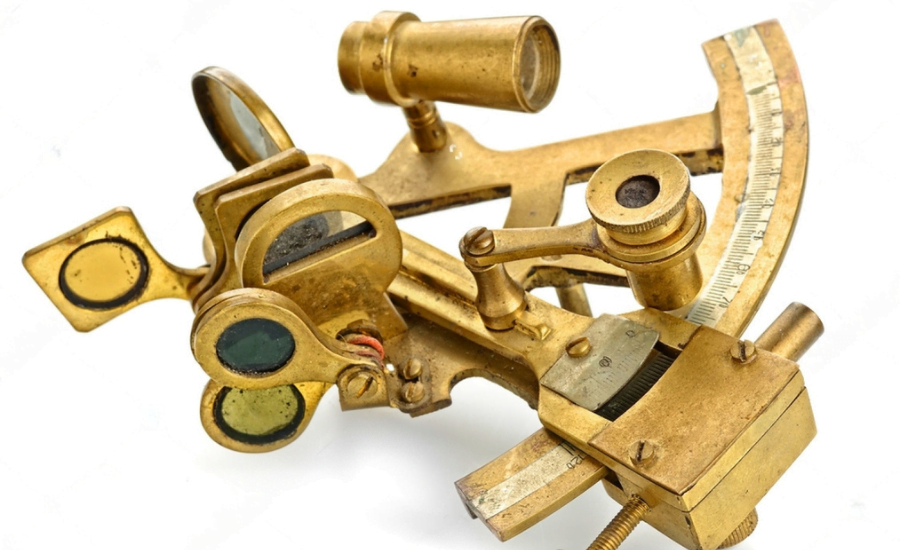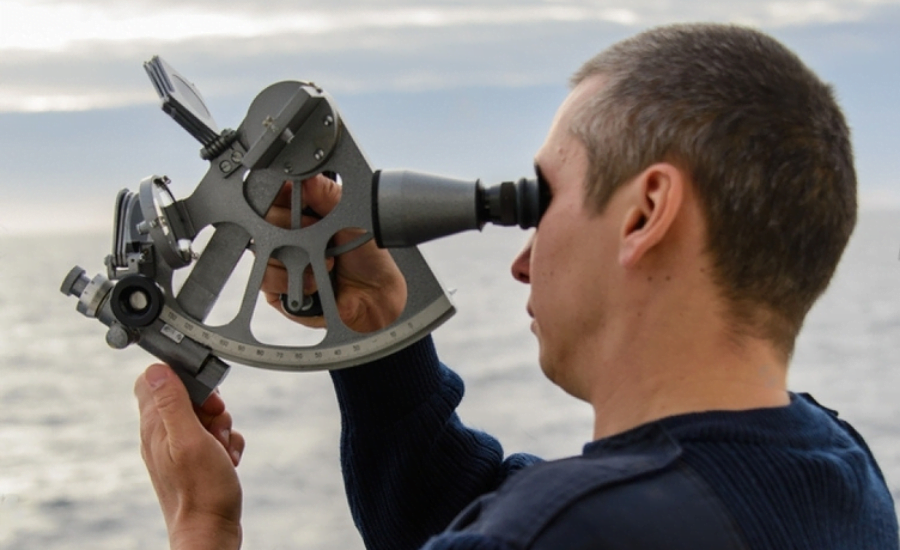
The marine sextant is an important navigational instrument that sailors and explorers have used throughout history to degree the point between two firmament bodies, commonly the sun and a star. It has been used for centuries at sea to determine latitude and longitude accurately. Using this equipment requires knowledge of mathematics, astronomy, physics, trigonometry, and optics to obtain accurate measurements.
Article Outline
This article outlines the marine sextant, its authentic importance, current employment, and how it works.
Generally, the concept of utilizing points to calculate separations dates back thousands of times, when old stargazers created essential disobedient such as astrolabes and quadrants that could measure angles up to 90°. It goes back to Overtime. These devices evolved into more complex tools such as the octant (1730) and, eventually, the sextant (1802). Due to its compact size and efficient design, it quickly became popular with navies worldwide, relying heavily on accurate navigation to navigate the oceans safely Stars to Sea. John Hadley and Thomas Godfrey invented the modern marine sextant in the 1730s, combining standards already created by Leonard Digges and Edmund Gunter over 200 years prior.
Since then, improvements have been made that allow for more accurate readings while being easier to use. Although largely replaced by electronic navigation systems in recent decades, they remain popular among recreational mariners. Due to their straightforwardness and exactness when utilized correctly.
History and Development
A marine sextant is a navigational instrument that measures the angle between two objects, usually the horizon and other visible objects such as the sun or Stars to Sea. John Hadley and Thomas Godfrey developed it in the 1730s, and together, they invented an improved version of the navigational instrument known as the octant. The main use of this device was to measure latitude at sea. In later years, as navigation technology improved, sextants became more sophisticated and were equipped with additional highlights. Such as movable mirrors and telescopes, which permitted more prominent measurement accuracy.
Over time, due to their reliability and accuracy in measuring angles from long distances, sextants became widely used by sailors and other professionals involved in maritime activities. This feature makes it ideal for use in many fields, such as celestial navigation, positioning, surveying, geodesy, and meteorology. This instrument is not only used for navigation purposes but can also be used for scientific research on the mutual positions of celestial bodies. The latest version is equipped with a digital display, allowing for even greater accuracy than its manual counterpart while maintaining portability.
Design and Function

Now that we have covered the history and development of the marine sextant. It is time to examine its design and function. A marine sextant is a precision instrument consisting of several parts that form a complex instrument for navigation at Stars to Sea. The structure of the marine sextant consists of four main components.
Frame –
Usually, the spine of the marine sextant’s structure ties all other elements together.
Index Arm-
It can be adjusted when measuring the angle during operation.
Horizon Mirror –
Reflects light from celestial bodies to measure angles accurately.
Telescope –
The telescope magnifies the image and allows for more accurate readings when sailing at sea level. By combining these components, users can use geometric, optical, and astronomical principles. Triangulation and spherical trigonometry to determine angles between two points on Earth accurately. In addition, technical specifications such as index error, arc scale and vernier scale allow direct reading of angular measurements required for navigation calculations on board or at sea. Considering its design features and operating principles. How marine sextants function today as tools that provide the high-precision angular data needed for safe navigation when navigating the world’s oceans. You can see if there are any.
Nautical Use

These measurements combined allow navigators to determine their geographic position at sea accurately. The use of sextants in ocean routes dates back centuries and has ended up being one of the foremost dependable strategies for determining position on long voyages. The primary purpose of a marine sextant is to calculate latitude or longitude coordinates on the Earth’s surface. This is accomplished by measuring the angular distance between two points in space, usually a star relative to the horizon. Sextants can also be used for more specific tasks, such as measuring altitude above sea level. This technique is called altimetry.
Additionally, with enough practice, users can spot other ships from considerable distances using their devices. This method is called “sky targeting” or “air ranging.” Marine sextants have been utilized effectively since antiquated times and stay prevalent nowadays due to their precision. Indeed when depending exclusively on visual information collection. It requires no additional technology beyond what is pre-installed on the device itself. This portability allows it to be used anywhere in the world where the night sky is visible, making it an essential tool. When accurate navigation information needs to be obtained quickly and reliably at sea or in remote locations where modern technology is unavailable.
Accuracy
Precision is a vital thought when it comes to marine sextants. A high level of accuracy allows for more accurate navigation and safer travel.
Instrument accuracy is determined by several factors, including:
- Quality of Construction
- Precise Alignment of Optical Components
- Accuracy of Arc Segmentation
- Reflection Properties of Mirrors or Prisms Used in the Instrument
- Stability over Time and Temperature Fluctuations
To understand and obtain detailed information about the performance and accuracy of each product design, various tests have been conducted to measure and analyze the accuracy of wide-range marine sextant tests. These tests evaluate parameters such as index error, tilt correction, and magnification.
Special testing machines and software designed specifically for this purpose are used to ensure that these instruments are properly tested. By measuring all significant parameters concurring with universal benchmarks set by bodies such as IALA (International Marine Marking and Lighthouse Association) and ISO (International Organization for Standardization). Manufacturers can ensure the reliability and accuracy of their products by measuring these values. It can be guaranteed before reaching.
It is important to perform these measurements regularly during the production process to maintain quality control levels. The importance of accurate measurement techniques cannot be denied. Therefore, care should always be taken to use only proven and certified equipment when evaluating the accuracy of marine sextants. In addition, regular maintenance must be performed to minimize aging and provide users with optimal performance over the product’s lifetime.
Conclusion
The marine sextant is an accurate and reliable tool that has helped sailors navigate navigation for centuries. Its design, functionality and precision are key factors for successful navigation, making it an integral part of maritime activities. It is also one of the few instruments that can be used accurately without an external reference point.
The modern sextant consists of two parts: the frame and the index arm. The frame holds a mirror or prism within its structure, and an indexing arm allows measurements at angles from 0° to 120° with up to quarter-of-a-minute accuracy. Combined with tables showing sunrise and sunset times, star positions, and other astronomical data. This equipment allows sailors to determine latitude and longitude coordinates while sailing.









